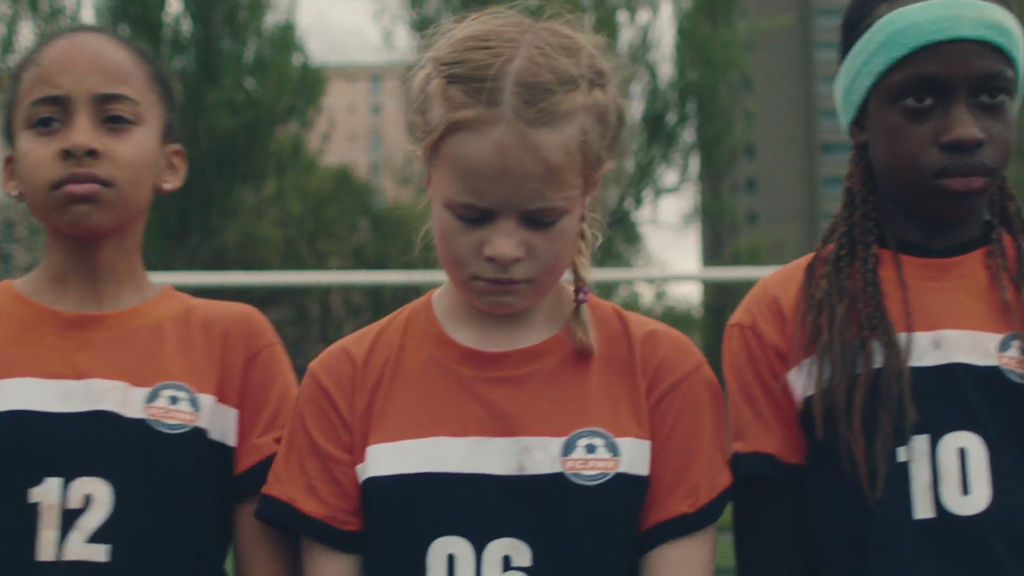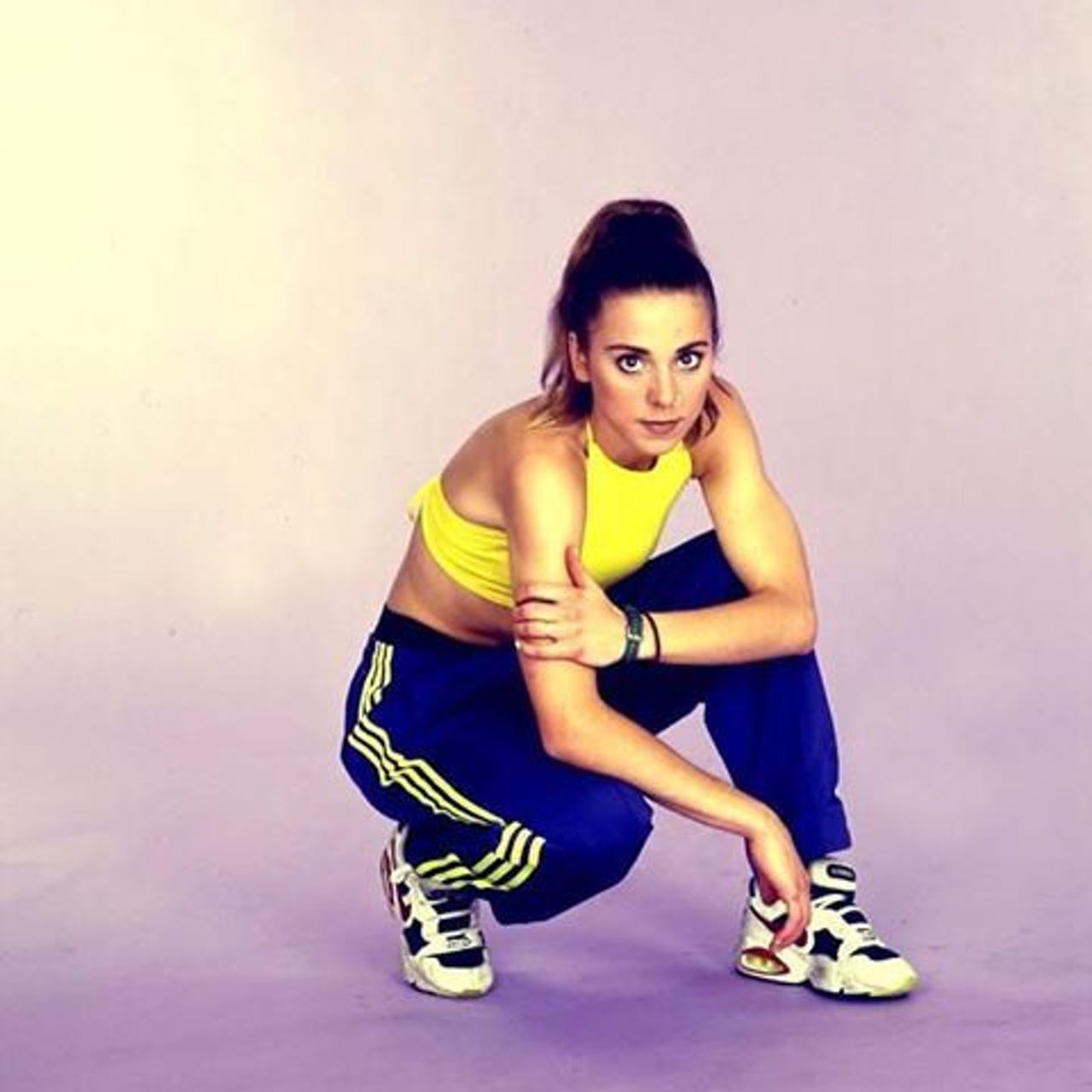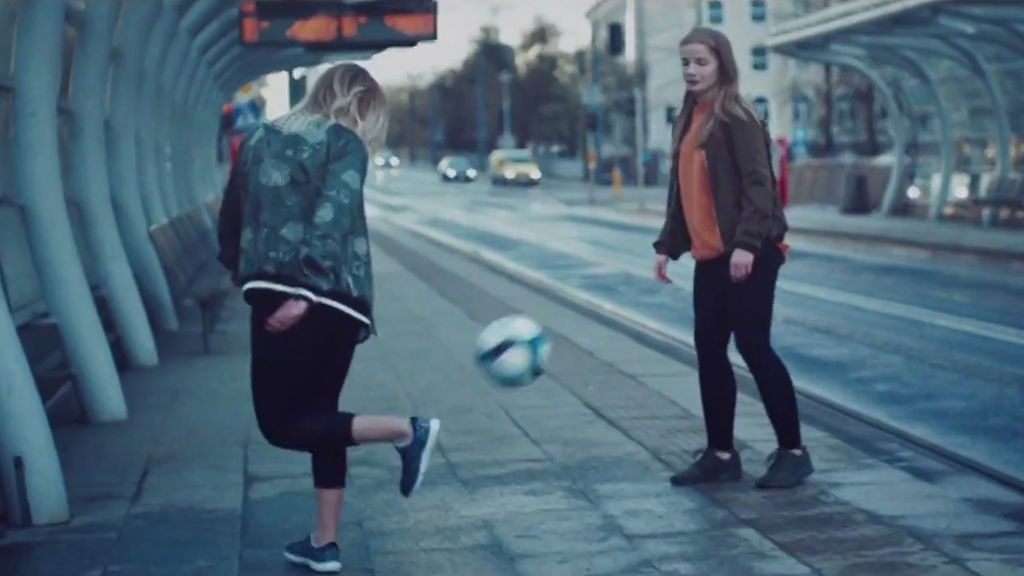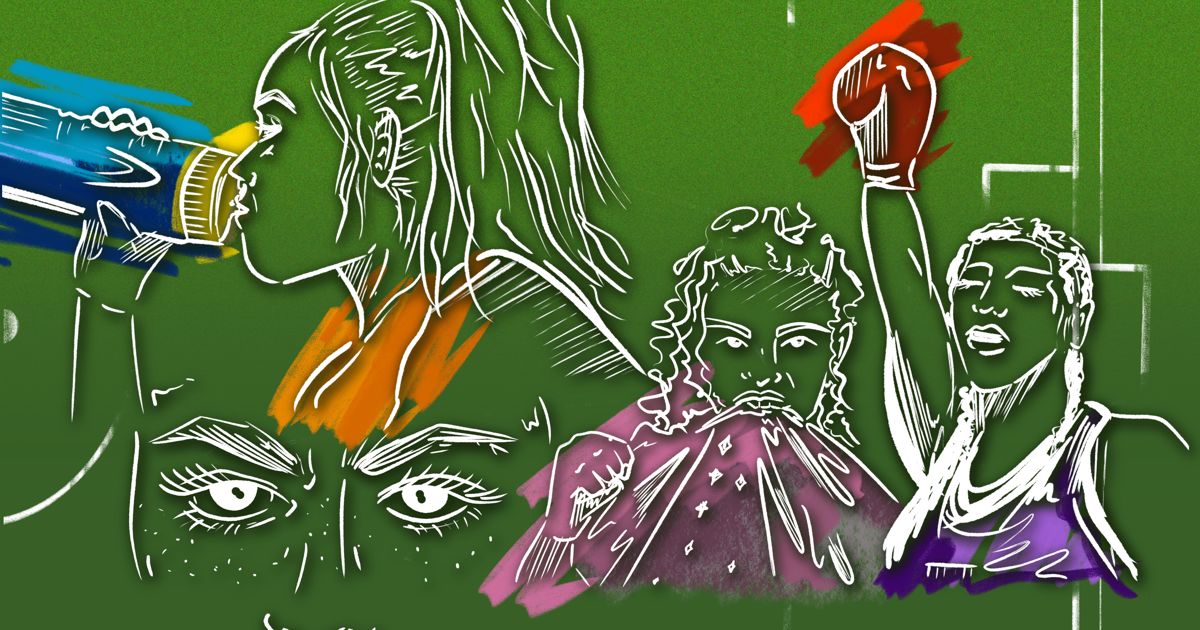From knickerbockers to glory – part two
In part two of shots’ VAR-enhanced look at the impact of this year’s Women’s World Cup, Carol Cooper joins the pundits to celebrate how, this summer, the shared goals of brands and fans – to engage with a new generation of female athletes – points to a brighter future for the game and its marketing
Last week shots’ looked at how female athletes have battled inequality and discrimination since Nettie Honeyball blazed a trail in 1895 by playing great football in scandalous knickerbockers.
With Nettie and her cohorts passing the baton down the years to the new footie stars who stormed through France – commentators have noted how the tournament marked a real sea change in women’s sports and how brands engage with it.
“Who remembers the advertising around the Women’s World Cup four years ago?,” ponders Knucklehead director Fanny Hoetzeneder, who helmed sponsor Crédit Agricole’s spot, Grace au Sport, “something big has changed and that’s really hopeful for the future of women, both in sports and in advertising.”
Credits
View on- Agency BETC/Paris
- Production Company Big Productions
- Director Fanny Hoetzeneder
-
-
Unlock full credits and more with a shots membership
Credits
View on- Agency BETC/Paris
- Production Company Big Productions
- Director Fanny Hoetzeneder
- Copywriter Clara Lafuente
- Art Director Jonathan Baudet-Botella
- Executive Creative Director Stephane Xiberras
- Creative Director Benjamin Bregeault
- Music Producer Christophe Caurret
- Producer David Green
Explore full credits, grab hi-res stills and more on shots Vault

Credits
powered by- Agency BETC/Paris
- Production Company Big Productions
- Director Fanny Hoetzeneder
- Copywriter Clara Lafuente
- Art Director Jonathan Baudet-Botella
- Executive Creative Director Stephane Xiberras
- Creative Director Benjamin Bregeault
- Music Producer Christophe Caurret
- Producer David Green
Hoetzeneder recalls how the brief from agency BETC was “to portray how sport can empower young girls to become the successful women of tomorrow.
"I kept thinking about when I was a kid growing up and watching telly,” she goes on, “I never saw an advert showcasing girls of my own age who weren’t afraid to get hurt and be themselves. What I like about the advertising around the Women’s World Cup is that it felt a true and exciting portrayal of sportswomen and that has been a long overdue.”
Traditionally, if you weren’t hot you were ignored.
This augurs well for representations of women in the media generally – and most crucially this will offer a new generation of positive role models. If women are respected more for what their bodies can do, that could trump unhealthy obsessions with how their bodies look.
“Traditionally, if you weren’t hot you were ignored,” says Grey London CCO, Vicki Maguire, “when I say hot, I mean petite and big-tits hot. If you had an athletic body – strong and fit – you were ignored. Nobody wanted to be Sporty Spice – we wanted to be Geri [Halliwell, aka Ginger Spice]. But times have changed. Led by the William’s sisters and now our Lionesses, we have a generation of sports stars who’ve grown up with a ‘fuck what you think of me’ attitude.”

ABOVE: Melanie Chisholm, aka Sporty Spice
Hoetzeneder is also enthusiastic about the new “celebratory content” being brought to a broader audience: “I really like Nike’s Dream Further. For a long time we only saw cool stuff with male footballers, now that we see cool stuff with women footballers, we’re finally giving young girls the chance to dream big and see themselves as empowered sportswomen.”
Created by W+K Portland, the spot featured 10-year-old aspiring player Makena Cook getting to play with her idols bound for the tournament in France.
The tagline was: ‘Don’t change your dream. Change the world’.
Credits
View on- Agency Wieden + Kennedy/Portland
- Production Company PRETTYBIRD
- Director Francois Rousselet
-
-
Unlock full credits and more with a shots membership
Credits
View on- Agency Wieden + Kennedy/Portland
- Production Company PRETTYBIRD
- Director Francois Rousselet
- Executive Creative Director Eric Baldwin
- Executive Creative Director Jason Bagley
- Creative Director Alberto Ponte
- Copywriter Josh Bogdan
- Executive Design Producer Alicia Kuna
- Associate Producer Candice Harbour
- Art Director Naoki Ga
- Copywriter Gus Solis
- Art Director Emma Barnett
- Art Director Pedro Izique
- Head of Production Matt Hunnicutt
- Executive Producer Jake Grand
- Executive Producer Krystle Mortimore
- Lead Producer Katie McCain
- Design Producer Michael Rosenau
- Executive Producer/Vice President Ali Brown
- Executive Producer Suzanne Hargrove
- Head of Production Tracy Hauser
- Editor Lauren Dellara
- Editing Company Rock Paper Scissors
- Post Producer Adam Parker / (Producer)
- Post Producer Catherine Liu
- Post Executive Producer Rana Martin
- Colorist Adam Scott / (Colorist)
- Color Executive Producer Linda Jackson
- Color Producer Liza Kerlin
- Executive Producer Leslie Carthy
- Audio Mixer Noah Woodburn
- Sound Design Company Joint Editorial (In-House at Wieden + Kennedy)
- Head of Production Andrea (Dre) Krichevsky
- Creative Director John Shirley
- Chief Creative Officer Phil Crowe
- Executive Producer Anastasia von Rahl
- Senior Producer Colin Oaten
- Senior Producer Alexandra Paton
- DP Matias Boucard
- VFX Senior Producer Jacklyn Ramirez
- Talent Alex Scott
Explore full credits, grab hi-res stills and more on shots Vault

Credits
powered by- Agency Wieden + Kennedy/Portland
- Production Company PRETTYBIRD
- Director Francois Rousselet
- Executive Creative Director Eric Baldwin
- Executive Creative Director Jason Bagley
- Creative Director Alberto Ponte
- Copywriter Josh Bogdan
- Executive Design Producer Alicia Kuna
- Associate Producer Candice Harbour
- Art Director Naoki Ga
- Copywriter Gus Solis
- Art Director Emma Barnett
- Art Director Pedro Izique
- Head of Production Matt Hunnicutt
- Executive Producer Jake Grand
- Executive Producer Krystle Mortimore
- Lead Producer Katie McCain
- Design Producer Michael Rosenau
- Executive Producer/Vice President Ali Brown
- Executive Producer Suzanne Hargrove
- Head of Production Tracy Hauser
- Editor Lauren Dellara
- Editing Company Rock Paper Scissors
- Post Producer Adam Parker / (Producer)
- Post Producer Catherine Liu
- Post Executive Producer Rana Martin
- Colorist Adam Scott / (Colorist)
- Color Executive Producer Linda Jackson
- Color Producer Liza Kerlin
- Executive Producer Leslie Carthy
- Audio Mixer Noah Woodburn
- Sound Design Company Joint Editorial (In-House at Wieden + Kennedy)
- Head of Production Andrea (Dre) Krichevsky
- Creative Director John Shirley
- Chief Creative Officer Phil Crowe
- Executive Producer Anastasia von Rahl
- Senior Producer Colin Oaten
- Senior Producer Alexandra Paton
- DP Matias Boucard
- VFX Senior Producer Jacklyn Ramirez
- Talent Alex Scott
Compared to male sports stars, until this year’s flourishing of female football, there have been very few celebrity sportswomen to act as brand ambassadors or sources of inspiration. “There are some great role models and ambassadors playing right now,” says FCB Inferno EVP Sharon Jiggins, “Nikita Parris is a fantastic example of an athlete who is both talented and philanthropic. While in the prime of her career she has also found the time to set up a football academy to inspire young women from deprived areas in her hometown. That’s a great story”
Such stories are increasingly delivered to younger fans via alternative channels. And, though fans can bypass the efforts of advertisers by accessing their idols on digital platforms, generally the growing of audience engagement is good news for brands. Director Dan Tubby of Tubby Brother Films, a London studio that’s created notable sports-focused content for Guinness and the FA says: “Role models are more accessible on social media to young women. They don’t need to rely on the whim of a marketing giant to expose them to their idols anymore. They can follow them directly, be part of a community with other fans and be inspired daily. Marketers are seeing that fan base increase and so sponsorship with female athletes is increasing – and that’s a good thing.”
Reflecting on FCB Inferno’s work on the award-winning UEFA campaign, Together #WePlayStrong, Jiggins says: “We tried to steer away from using traditional marketing techniques. We led with a social first approach to be where our audience of young girls already are. This opened up so much more creative opportunity for us.”
Credits
View on- Agency FCB Inferno/London
- Production Company Nexus Studios/UK
- Director Kibwe Tavares
-
-
Unlock full credits and more with a shots membership
Credits
View on- Agency FCB Inferno/London
- Production Company Nexus Studios/UK
- Director Kibwe Tavares
- Copywriter Sarah Lefkowith
- Director of Content Alvaro Ramirez
- Group Creative Director Elspeth Lynn
- Producer Kate Grenfell
- Editing Stitch
- Post Production Time Based Arts
- Sound Design Factory
- Music Leland Music
- Content Post Production Unit
- Editor Tim Hardy
- Sound Designer Jon Clarke
Explore full credits, grab hi-res stills and more on shots Vault

Credits
powered by- Agency FCB Inferno/London
- Production Company Nexus Studios/UK
- Director Kibwe Tavares
- Copywriter Sarah Lefkowith
- Director of Content Alvaro Ramirez
- Group Creative Director Elspeth Lynn
- Producer Kate Grenfell
- Editing Stitch
- Post Production Time Based Arts
- Sound Design Factory
- Music Leland Music
- Content Post Production Unit
- Editor Tim Hardy
- Sound Designer Jon Clarke
Launched in 2017, the five-year, pan-European initiative aims to encourage girls aged 13 to 17 into football. “The campaign introduced a new visual language that was all about driving conversations amongst our audience by producing a range of GIFs and stickers. By focusing on interactivity we were allowing women and girls to express how playing or supporting football makes them feel and giving them their own, authentic images of feminity,” explains Jiggins.

ABOVE: An example of the tweets sent out as part of the #WePlayStrong campaign.
Along with improved images of womanhood, has Women’s World Cup also offered a chance to refresh the image of football itself? Maguire notes how in comparison the men’s game seems a bit ‘last season’: “I think men’s football has become a ridiculous parody of the game (and I say that as a fan); diving, racism, homophobia and toxic masculinity, alongside lottery numbered salaries and married with piss-poor performance, makes the women’s game a better, more real watch. Culturally men’s football has got to get its own house in order.” She also notes the diversity of women’s football culture: “how can you have so many queer and out relationships in the women’s game, but not in the Premiership. It shows how far men’s football has to go to catch-up with the rest of society.”
There is, too, an argument that male footballers’ culture of excess can alienate fans. “There is a heavy focus on the lifestyle of the professionals,” says Dan Tubby, “with their wealth being the focus – rather than their achievements within the sport. This leaves a lot of young people a bit confused as to what their role-models are really offering them.”
If you look at it optimistically, brands like Visa and Barclays are signing longer-term deals to support and grow the sport, both professionally and at grassroots level. Doesn’t seem so cynical to me.
Simon Dent, Founder of sports-focused ad agency, Dark Horses, feels there’s a learning opportunity for the game going forward: “I think the women’s game has the chance to learn from all of the mistakes of the men’s game - the hooliganism, the agents, the massive wages – and fix some of those problems at the outset. This will open the door for more brands to feel safe to enter.”
Not that brands have been backward in coming forward so far. In fact, some skeptics have commented on the eagerness of brands to get skin in the game, pointing out that years of underfunding in women’s sports have made it a cheap option. Writing in The Guardian, Juventus Women player Eni Aluko said: “There’s a bit of cynicism about why brands are suddenly champing at the bit to invest in women’s sport. Is it because of the huge equality movement over the past couple of years or because it doesn’t actually cost very much in comparison with the brand benefit achieved?”
Dent concedes there is a point here but is positive – it’s still investment: “You can argue the opportunities may not cost as much as other sports, but that’s just marketing. But if you look at it optimistically, brands like Visa and Barclays are signing longer-term deals to support and grow the sport, both professionally and at grassroots level. Doesn’t seem so cynical to me. Most brands are involved because they can see the opportunity to be at the forefront a burgeoning sport.”
Messaging should be backed up with substance and action. If [a brand’s] strategy is to jump on a trend because female-centric marketing is current, then they can be in danger of being seen as profiting off a movement.
“It’s all about exposure for the Lionesses and the sport,” says Maguire, “It’s a watershed moment culturally and financially for these girls. If brands want to cash in now because it costs them less – good to luck to them. The sale won’t last long though!”
Dan Tubby is optimistic as long the marketing is in-line with actions, such as Guinness’s investment in women’s rugby over the next six years: “Essentially messaging should be backed up with substance and action. If [a brand’s] strategy is to jump on a trend because female-centric marketing is current, then they can be in danger of being seen as profiting off a movement.”
In terms of profiting from women’s football, the players themselves still have a long way to go. The US national team have taken legal action against the US Soccer Federation over equal pay and their team captain Megan Rapinoe was vocal on the issue after picking up the World Cup trophy, which famously comes with total prize money that, though double that of the 2015 Women’s World Cup, at £24m, was still a smidge short of the £315m awarded to the victors of last year's men's World Cup.
Though there are arguments that the pay gap is a matter of revenues generated rather than sexism, the fact that the world’s top earner in the women’s game, Ada Hegerberg, enjoys an annual income of £343,000, while Lionel Messi nets a tidy £112 million a year gives one pause for thought.
Credits
View on- Agency Uncommon/London
- Production Company Somesuch
- Director George Belfield
-
-
Unlock full credits and more with a shots membership
Credits
View on- Agency Uncommon/London
- Production Company Somesuch
- Director George Belfield
- Editing Speade
- Grade Framestore/London
- Sound Design Soundtree Music
- Producer Tarquin Glass
- Executive Producer Sarah Pearson / (Head of Content & Entertainment)
- Executive Producer Gloria Bowman
- DP Harry Wheeler
- Editor Sacha Szwarc
- Colourist Simon Bourne
- Sound Designer Henning Knoepfel
- Talent Fran Kirby
Explore full credits, grab hi-res stills and more on shots Vault

Credits
powered by- Agency Uncommon/London
- Production Company Somesuch
- Director George Belfield
- Editing Speade
- Grade Framestore/London
- Sound Design Soundtree Music
- Producer Tarquin Glass
- Executive Producer Sarah Pearson / (Head of Content & Entertainment)
- Executive Producer Gloria Bowman
- DP Harry Wheeler
- Editor Sacha Szwarc
- Colourist Simon Bourne
- Sound Designer Henning Knoepfel
- Talent Fran Kirby
But at least we are heading in the right direction and maybe as the youth take over the game we can look forward to time where we are not comparing men’s and women’s football, either culturally or fiscally. George Belfield directed the Nike series of films, Lioness Tributes, created by London agency, Uncommon.
Did he consider the men's game when making these films? “My focus was on the players and their towns, and girls playing football in those towns. I wasn’t really interested in drawing comparisons, I just wanted to portray the reality of what we found. I wanted the films to be youth-oriented. Jumpers for goalposts and so on.” He goes on to reveal an interesting facet of how young people seem to be approaching the game now. “When I was a kid, girls didn’t play football, apart from one or two outliers. It was refreshing to find an incredibly mixed game when we were travelling around filming. Everyone just plays football together, and gender isn’t really a thing, at least among younger kids. It’s a much more inclusive vibe.”
Maybe one day we will have just the one World Cup, a non-binary, gender-fluid festival of football. Or at least a tournament where the England’s national women’s team gets a Lioness’s share of the prize money.
Nettie would be chuffed.
)










